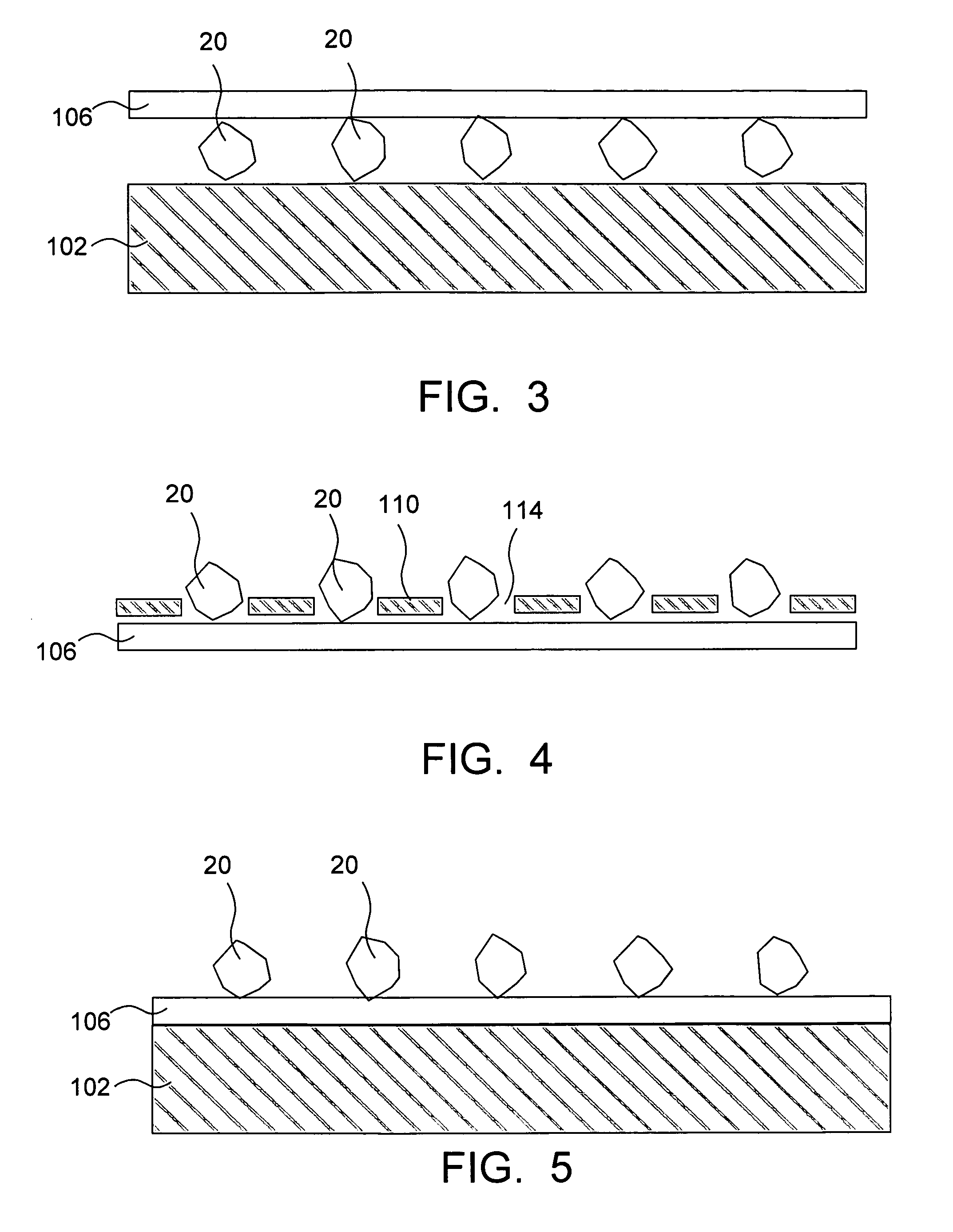Brazed diamond tools and methods for making the same
a diamond tool and diamond technology, applied in the field of tools, can solve the problems of unnecessary limits on the useful life of abrasive particles, inability to maximize the efficiency of cutting, grinding, polishing, etc., and achieve the effect of effectively sealing the working surface of the tool, reducing the risk of abrasive particles being absorbed, and reducing the cost of production
- Summary
- Abstract
- Description
- Claims
- Application Information
AI Technical Summary
Benefits of technology
Problems solved by technology
Method used
Image
Examples
example 1
[0166] 40 / 50 mesh diamond grit (SDA-85+ made by De Beers Company) were mixed with iron powders and an organic binder to form a mixture with diamond concentration of 20 (5% of total value). The mixture was cold pressed in a steel mold to form the shape of a saw segment. The precursor was placed in a graphite mold and overlaid with a powder of Nicrobraz LM. The mold was heated under vacuum to about 1,050° C. for 20 minutes. The infiltrated braze had bonded diamond and matrix powder together for form a segment. Twenty-four of such segments were manufactured and they were trimmed to desirable tolerances. These segments were brazed onto a 14-inch round steel circular saw blade. The blade was used to cut granite at a faster cutting rate than was possible with conventional diamond saw blades. Additionally, the brazed saw blades had a longer useful life than a conventional diamond saw blade.
example 2
[0167] 40 / 50 mesh diamond grit (SDA-85+ made by De Beers Company) were mixed with metal powder to form a mixture with a diamond concentration of 20 (5% of total volume). Five different proportions of cobalt (about 1.5 micrometer in size) and bronze (about 20 micrometers in size) were used for the matrix powder. An acrylic binder was added (8% by weight) to the mixture and the charge was blended to form a cake. The cake was then rolled between two stainless steel rollers to form sheets with a thickness of 1 mm. These sheets were cut in the shape of saw segments with a length of 40 mm and width of 15 mm. Three each of such segments were assembled and placed into a typical graphite mold for making conventional diamond saw segments. The assembled segments were pressed and heated by passing electric current through the graphite mold. After sintering for three minutes, the segments were consolidated to a height of 9 mm with less then 1% porosity. Twenty-four segments for each composition ...
example 3
[0168] The same procedures were followed as Example 2, but with 8 thinner layers (0.4 mm) for each segment. The diamond concentration was reduced to 15 and particles were positively planted according to the illustration as shown in FIGS. 10A through 10D. The diamond distribution was much improved. As a result, the performance of these blades were equal or better than those made by conventional methods with diamond concentration of 20.
PUM
| Property | Measurement | Unit |
|---|---|---|
| liquidus temperature | aaaaa | aaaaa |
| temperature | aaaaa | aaaaa |
| temperature | aaaaa | aaaaa |
Abstract
Description
Claims
Application Information
 Login to View More
Login to View More - R&D
- Intellectual Property
- Life Sciences
- Materials
- Tech Scout
- Unparalleled Data Quality
- Higher Quality Content
- 60% Fewer Hallucinations
Browse by: Latest US Patents, China's latest patents, Technical Efficacy Thesaurus, Application Domain, Technology Topic, Popular Technical Reports.
© 2025 PatSnap. All rights reserved.Legal|Privacy policy|Modern Slavery Act Transparency Statement|Sitemap|About US| Contact US: help@patsnap.com



